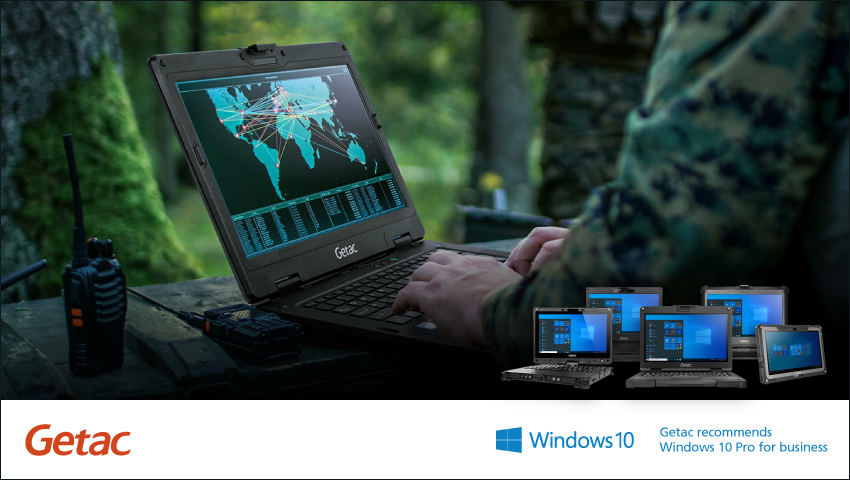Promoted by Getac
Historically, the defence sector has always been known to be at the forefront of technological innovation. Conflict has often been a catalyst for the creation of new technologies, and the defence industry has been at the helm of many of these new inventions.
However, with the growth of cybersecurity, Internet of Things (IoT), cloud, and data collation/exploitation, the defence industry has fallen behind the private sector and finds itself in conflict with the technology it now needs.
It has become apparent to many private-sector and government organisations that effective digital transformation is key in supporting long-term defence plans. This revelation has seen money being funnelled into areas such as automation, mobile communications, and cybersecurity, where focused research and strategic alliances drive significant rewards across industries.
When it comes to the defence sector, there are a number of challenges that inhibit this same rapid rate of digital transformation. These include:
- Constrained by budget
Although current budget projections see defence spending in Australia remaining relatively stable, many fear the economic impact of the COVID-19 pandemic will force further cuts to defence budgets in the near future and reduce the amount available for technological transformation. - Bound by regulation
In many cases, innovation in this sector is hampered by new suppliers having to provide evidence of previous, similar work within the industry before even being considered for new tenders. This so-called ‘Catch-22’ situation leaves some of the best potential suppliers on the outside looking in. - Hampered by complexity
As the world in general becomes more technologically advanced, so too does global warfare. With the increased complexity of the equipment available, defence sectors are experiencing longer research and development (R&D) lead times, longer and more complex supply chains, and more expensive manufacturing processes. - Confused by new relationships
Modern defence now relies much more heavily on civilian contractors than it has in the past. Key areas such as private security, infrastructure, communications, logistics, IT, and programming are all now typically supported by non-military experts and technicians from external organisations. - Concerned by cybersecurity
The threat of a cybersecurity attack is ever present with the growth of technology in the defence sector. Keeping systems secure is a continual, fast-moving, and iterative process requiring enormous diligence within an organisation. Outsourced civilian specialists rather than internal military personnel are frequently charged with ensuring cybersecurity, creating further knowledge gaps within the industry.
With technology playing an ever-increasing role in modern conflict, effective digital transformation is becoming a key priority for defence decision-makers. However, despite the defence sector being synonymous with innovation in some regards (including specialty materials, weapons systems, and digital communications), it is behind the curve in adopting many consumer-like technologies that hold the key to effective digital transformation.
There has been speculation that a lack of direction and focus on technological investments has been at the root of this industrywide technological lag. However, embracing change and the positive outcomes found in the private sector will see the defence industry create lasting and strategic change, step by step.
These digital changes can come in many forms, and in some areas can be implemented immediately. These areas include:
- Automation
Leveraging digital technologies such as automation can quickly transform operations, saving resources and boosting efficiency. The growing use of automated drones in the field highlights the ability of these kinds of technologies to improve situational awareness without putting soldiers’ lives at unnecessary risk. Automation through robotics and drones can also speed up vehicle and building maintenance tasks through faster visual inspections and secure report logging via the cloud. - Mobile communications
Effective communication can lead to life or death in a defence setting. Soldiers under fire require a heavy focus on command, control, communications, computers, intelligence, surveillance, and reconnaissance (C4ISR), making this a key factor in driving digital transformation. As asymmetric warfare continues to rise, so does the growing requirement for flexible interoperability of systems and networks to support in-field operations, further compounding this need. - Cybersecurity
With the threat of cyberwarfare, system hacking, and infiltration at an all-time high, data security is now a top priority for any digital transformation discussion, particularly when it comes to the highly sensitive information used across the defence industry. To meet stringent military standards, data must be protected against attack when at rest, in use, or in transit. This requires both hardware and software to be encrypted, which can extend to system hardening, peripheral control and central management.
To action these changes, defend organisations must rely on the outsourcing of strategic partnerships to action effective digital transformation plans. Specialist vendors can offer flexible, innovative solutions to many of the digital challenges that the industry faces.
Getac is one such vendor with more than 30 years of experience in the rugged technology industry. Getac currently manufactures devices to be deployed in harsh field environments including defence
Getac's commercial off-the-shelf (COTS) solutions can be tailored to the needs of the defence industry. Its solutions deliver high powered processing and reliability in operational environments and cover all facets of defence including command and control, situational awareness, mission planning, transportation and tactical logistics, platform maintenance, training, tactical communication, and platform analytics to deliver a digital defence ecosystem.
While the benefits of a digital transformation across the defence industry are clear, change cannot be achieved overnight. It is only through strategic planning and trusted partnerships that the defence sector can embrace the power of technological services in conflict.
 Login
Login






